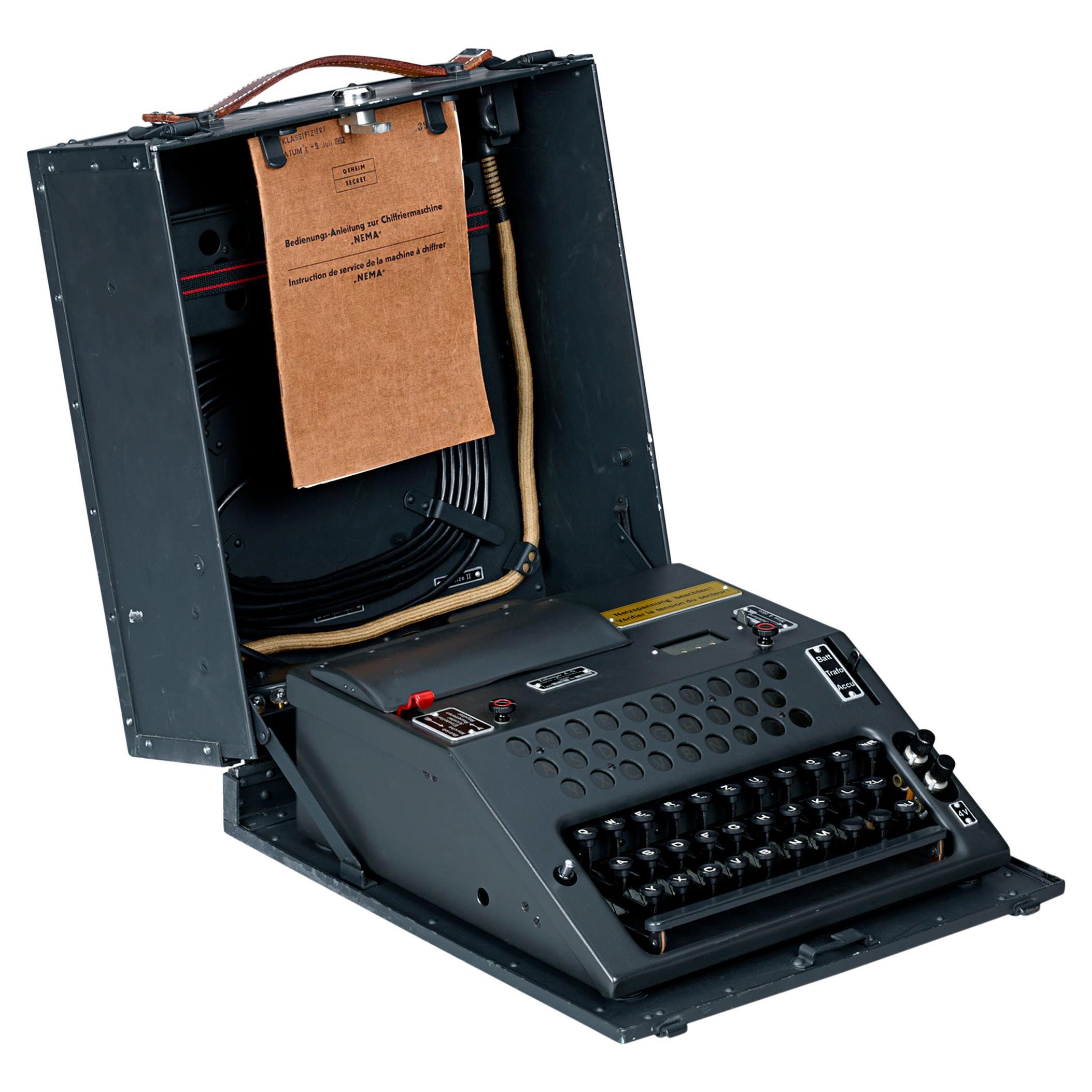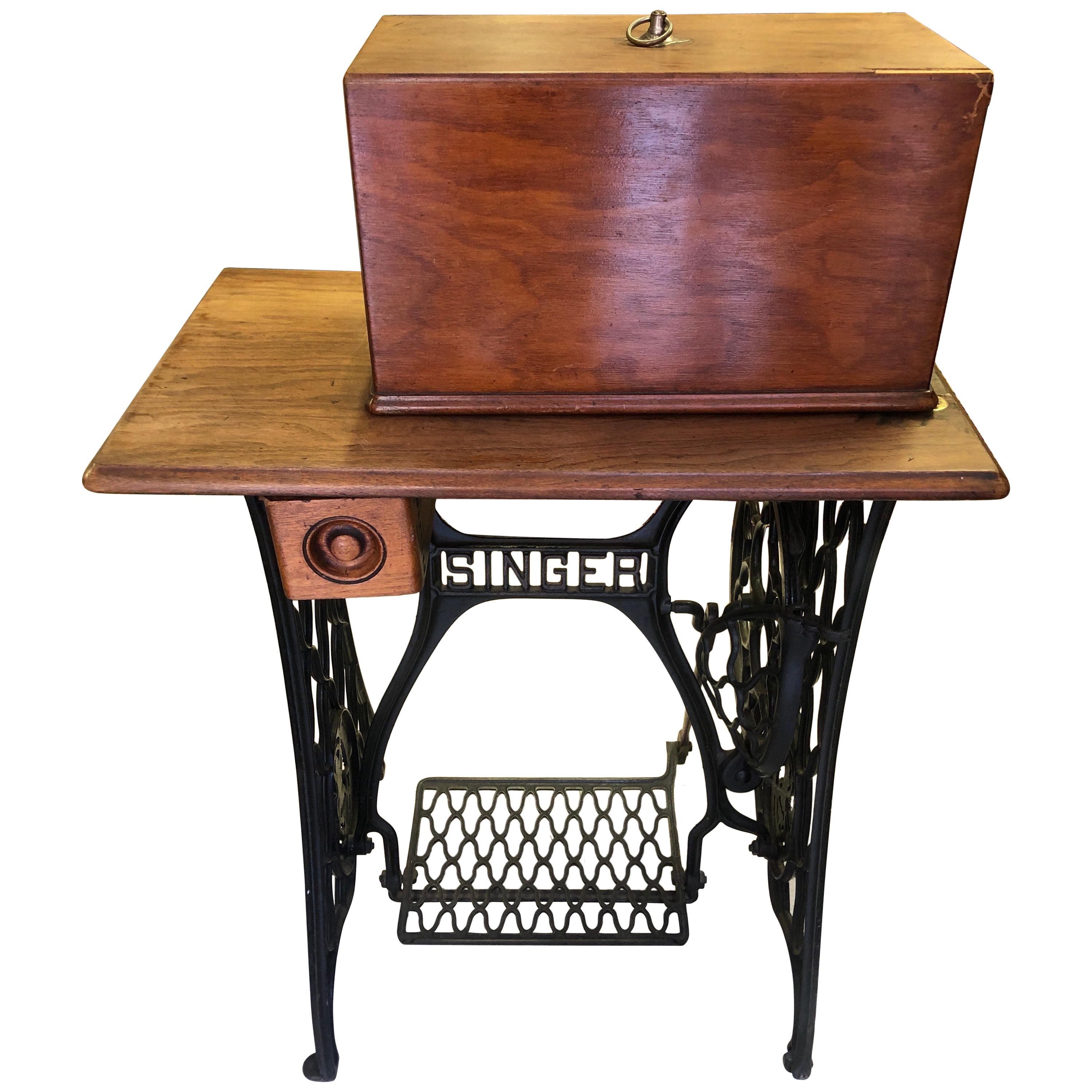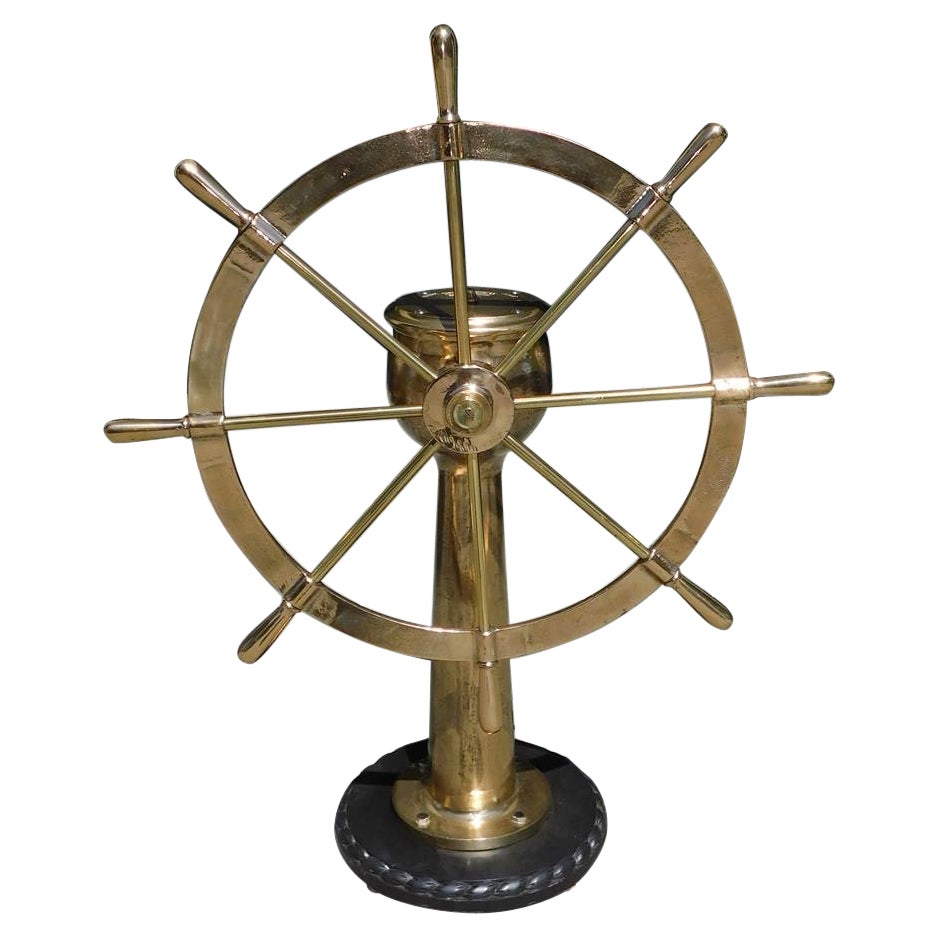Items Similar to Russian Electromechanical Wheel-Based Cipher Machine Fialka M 125
Want more images or videos?
Request additional images or videos from the seller
1 of 15
Russian Electromechanical Wheel-Based Cipher Machine Fialka M 125
About the Item
M-125 Fialka-electromechanical wheel-based cipher machine
USSR rotor-based cipher machine
M-125, codename Fialka (Russian: ??????), was an electromechanical wheel-based cipher machine, developed in the USSR shortly after WWII. It was first introduced in 1956 and soon became one of the favorite machines of the Warsaw Pact and some allied nations, such as Cuba. The machine is similar to the American SIGABA, the KL-7 and, to a lesser extend, the Enigma. For this reason the machine is sometimes referred to as the Russian Enigma. The original M-125 was succeeded by the M-125-3M in the mid-1960s and remained in use until the early 1990s.
The machine has 10 cipher rotors, each with 30 contacts at either side. Adjacent rotors move in opposite directions. In addition, the machine has a card reader in which a new punched key card was installed on a daily basis. In addition, it has a printer, a tape reader and a tape puncher.
Each country of the Warsaw Pact had its own customized Fialka version, adapted for the local language. This means that each country had its own keyboard and print head. Furthermore, the wiring of the coding wheels is different for each country. The rest of the machine is identical.
Fialka M-125-3 with open lid
Most machines can be used for messages in Latin and Cyrillic (Russian) writing. Although the Latin alphabet was different for each country, the Cyrillic alphabet had no punctuation marks and was identical on all machines, making them interoperable when a mutual set of wheels was used. A standard – Russian-only – version also existed. It was used by local USSR services like the KGB.
The fall of the Berlin wall in 1989, marked the decline and led to the collapse of the Soviet Union. With the retreat of the Russians from the countries behind the Iron Curtain, the remaining Fialka machines were taken back and have subsequently been destroyed. Fortunately, some machines have miraculously escaped demolition, which enables us to present some details here.
Fialka is a Russian word that means violet ; a rather nice small flower. Around 1956, the Russian Army introduced a brand new cipher machine, which was given the codename FIALKA. Two basic versions of the machine are known to exist: M-125 and M-125-3M, with country-specific variants of each model. In principle, the machine is called M-125, whereas Fialka is the name of the cipher procedure. However, as most people call the machine Fialka, we have used that name throughout this website as well. Here are two examples. The one on the left is a basic M-125.
The older M-125 and the later M-125-3 side by side (Polish versions shown here)
The design of the Fialka is clearly based on the well-known Enigma machine, that was used by the German Armed Forces during WWII. Like the Enigma, it uses electromechanical cipher wheels to scramble the letters typed on the keyboard. With each key-press, the wheels move into a new position, thereby effectively changing the wiring and, hence, the alphabet substitution for each letter that is entered. And that's where the similarity with the Enigma ends.
Rather than presenting the output on a lamp panel, the Fialka prints the coded letter directly onto a paper strip. At the same time it can punch the letter into the same paper tape in a 5-bit digital code, much like the baudot code of a teletype machine. In addition, Fialka is equipped a paper tape transmitter that can be used to transmit or duplicate a message. During WWII, the Russians have clearly learned from the flaws in the Enigma's design and its operating procedures, as they have implemented the following improvements:
10 wheels, rather than 3 or 4 on the Enigma,
More frequent wheel turn-overs,
Adjacent wheels move in opposite directions,
Wheel wiring can be changed in the field (from 1978 onwards),
A punched card is used to replace the Steckerbrett,
A letter can be encoded into itself (impossible on Enigma).
In addition to this, the following extra features are available:
The use of letters, numbers and punctuation marks (M-125-3 only),
Possibility to duplicate a punched-paper tape,
Suitable as a standard teletype machine (in plaintext mode),
Supports both Russian (Cyrillic) and Latin alphabets.
Models
Two basic models of the machine are known. They are often referred to as the old model and the new model. Furthermore, country-specific variants were made for each country in which the M-125 was used. For the old model, this involved the wiring of the cipher wheels, but for the new model, this also involved the layout of the (language-dependent) keyboard and the print head
- Dimensions:Height: 8 in (20.32 cm)Width: 11 in (27.94 cm)Depth: 13 in (33.02 cm)
- Materials and Techniques:
- Period:
- Date of Manufacture:1950
- Condition:
- Seller Location:Madrid, ES
- Reference Number:1stDibs: LU5779232784512
About the Seller
4.9
Platinum Seller
These expertly vetted sellers are 1stDibs' most experienced sellers and are rated highest by our customers.
Established in 2005
1stDibs seller since 2021
222 sales on 1stDibs
Typical response time: 1 hour
- ShippingRetrieving quote...Ships From: Madrid, Spain
- Return PolicyA return for this item may be initiated within 14 days of delivery.
More From This SellerView All
- Gold Necklace with Turquoises Art Deco France, Early 20th CenturyBy Europa AntiquesLocated in Madrid, ESGOLD NECKLACE WITH TURQUOISES Art Deco France, early 20th Century in 18 kt gold mesh set with turquoise cabochon cut, oval and round cut. With 'Mocho'...Category
Early 20th Century French Art Deco Collectible Jewelry
MaterialsGold
- Amazing and Rare 20th Century Italian Astrolabe H: 94cmBy Europa AntiquesLocated in Madrid, ESRare 20th Century Italian Astrolabe H: 94cm 94x60 cm approx. Chromed steel astrolabe with engraved zodiac signs. Wooden base. good conditionsCategory
20th Century Italian Modern Nautical Objects
MaterialsStainless Steel
- SEMI-ROUND WHITE CARRARA MARBLE FLORENTINE HAND WASHBASIN 20th CenturyBy Europa AntiquesLocated in Madrid, ESSEMI-ROUND WHITE CARRARA MARBLE FLORENTINE HAND WASHBASIN 20th Century Hand basin in white Carrara marble 20th century Veined white Carrara marble. Ho...Category
20th Century Italian Modern Architectural Models
MaterialsCarrara Marble
- Emaculate GOLD RING WITH DIAMONDS American 20th CenturyBy Europa AntiquesLocated in Madrid, ESEmaculate GOLD RING WITH DIAMONDS American 20th Century in 18 kt white gold, with SI2 central stone, color D~E, with an estimated weight of 2.14 ct, surrounded by 26 brilliants (1.5...Category
20th Century American Modern Collectible Jewelry
MaterialsGold
- 17th Century Portuguese Tile Panel Representing "The Saints"By Europa AntiquesLocated in Madrid, ES17th Century Portuguese Tile Panel Representing "The Saints" restored 15cm x 29cm Amazing Unique Art Work.Category
Antique 17th Century Portuguese Baroque Religious Items
MaterialsPorcelain
- 17th Century Portuguese Tile Panel Representing "The Saint"By Europa AntiquesLocated in Madrid, ES17th Century Portuguese Tile Panel Representing "The Saint" restored 28cm x 28cm Amazing Unique Art Work.Category
Antique 17th Century Portuguese Baroque Religious Items
MaterialsPorcelain
You May Also Like
- Swiss Nema Cipher MachineLocated in New Orleans, LAThis Swiss-engineered cipher machine is a fascinating piece of 20th-century military and engineering history, and this particular example is one of the ...Category
20th Century Swiss Other Historical Memorabilia
MaterialsMetal
- Cx-52 Model Swiss Cipher MachineLocated in New Orleans, LAA triumph of ingenuity and craftsmanship, this Swiss cipher machine is a fabulous example of mechanical precision. Cipher machines are used to encrypt a...Category
20th Century Swiss Other Historical Memorabilia
MaterialsMetal
- Vintage Singer Sewing Machine on Original Cast Iron BaseBy SingerLocated in Sofia, BGOriginal Singer sewing machine with all original parts. USA, circa 1920.Category
Early 20th Century American Historical Memorabilia
MaterialsWrought Iron
- Antique Sharpening Wheel Standing on Wood Base, France, circa 1900Located in Sofia, BG20th Century sharpening wheel standing on wood base. France, circa 1900.Category
Early 20th Century French Models and Miniatures
- Ship Wheel from a Wheeler YachtLocated in Norwell, MASolid brass ships wheel with the name wheeler cast into one of the spokes. Wheeler was a famous maker of yachts, up to seventy five feet, cabin cruisers, etc. Hemingway wrote his ...Category
Vintage 1930s North American Nautical Objects
MaterialsBrass
- American Brass Nautical Ship Wheel Mounted on Geared Pedestal w/ Rope Base 1890Located in Hollywood, SCAmerican brass nautical ship wheel with a central circular brass hub, eight brass spindles with bulbous handles, solid brass geared pedestal, rudder indicat...Category
Antique 1890s American American Empire Nautical Objects
MaterialsBrass





